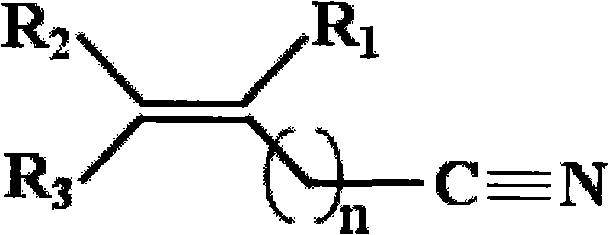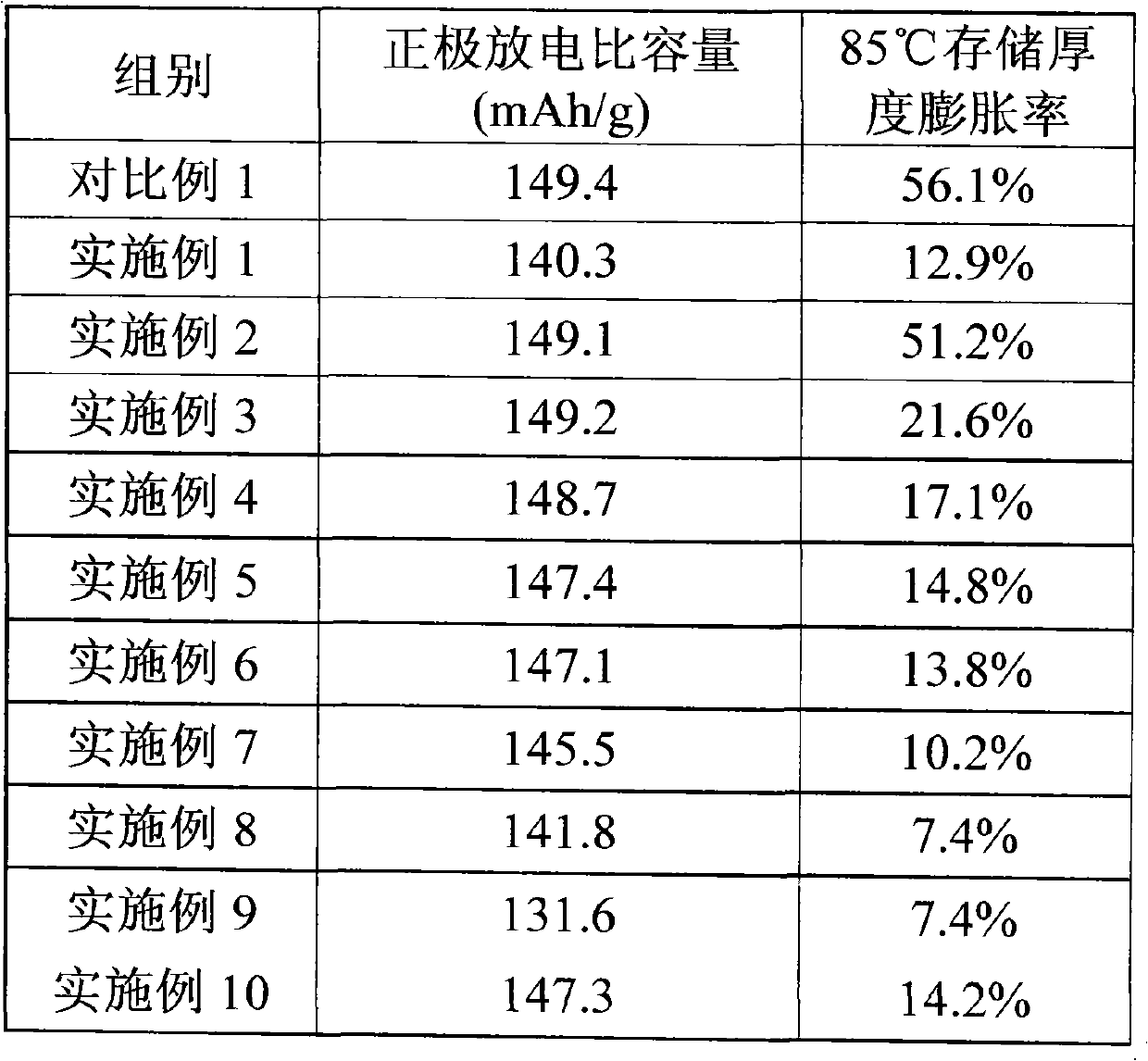Lithium ion battery and electrolyte thereof
A lithium-ion battery and electrolyte technology, which is applied in the direction of secondary batteries, circuits, electrical components, etc., can solve the problems of battery flammable electrolyte leakage, battery equipment damage, battery damage, etc., and achieve small expansion of battery thickness, The effect of reducing gas generation and good stability
- Summary
- Abstract
- Description
- Claims
- Application Information
AI Technical Summary
Problems solved by technology
Method used
Image
Examples
Embodiment 1
[0034] Electrolyte preparation:
[0035] Ethylene carbonate (EC), propylene carbonate (PC), and diethyl carbonate (DEC) were mixed in a mass ratio of 40:40:20 to obtain a non-aqueous solvent, and lithium hexafluorophosphate (LiPF 6 ) is dissolved in the above-mentioned non-aqueous solvent as a lithium salt to obtain a basic electrolyte. Then add 2-butenenitrile as an additive to the basic electrolyte, so that the mass of 2-butenenitrile accounts for 3 wt% of the total mass of the electrolyte.
[0036] Preparation of lithium-ion batteries:
[0037] The positive electrode active material LiNi 0.5 co 0.2 mn 0.3 o 2 (LNCM), conductive agent acetylene black, and binder polyvinylidene fluoride (PVDF) were mixed in N-methylpyrrolidone solvent system at a mass ratio of 96:2:2, and then coated on Al foil and baked. Dry and cold press to obtain the positive electrode sheet.
[0038]Negative electrode active material artificial graphite, conductive agent acetylene black, binder st...
Embodiment 2
[0042] Different from Example 1, the non-aqueous solvent of the electrolyte is a mixture of dimethyl carbonate (DMC), diethyl carbonate (DEC) and ethylene carbonate (EC), and the mass ratio of the three is 40:40 : 20, the additive is 4-n-dodecyl-3-butenenitrile, and the quality of 4-n-dodecyl-3-butenenitrile accounts for 0.1wt% of the total mass of the electrolyte.
[0043] The positive active material is lithium cobalt oxide (LiCoO 2 ); the negative electrode active material is a mixture of natural graphite and hard carbon, and the mass ratio of the two is 85:15 respectively.
[0044] The rest are the same as in Embodiment 1, and will not be repeated here.
Embodiment 3
[0046] Different from Example 1, the non-aqueous solvent of the electrolyte is a mixture of ethyl methyl carbonate (EMC), gamma-butyrolactone and vinylene carbonate (VC), and the mass ratio of the three is 80:10: 10. The additive is 3-methyl-3-butenenitrile, and the mass of 3-methyl-3-butenenitrile accounts for 0.5wt% of the total mass of the electrolyte.
[0047] The positive active material is lithium cobalt oxide (LiCoO 2 ) and lithium nickelate (LiNiO 2 ), the mass ratio of the two is 90:10; the negative electrode active material is a mixture of artificial graphite and soft carbon, and the mass ratio of the two is 70:30.
[0048] The rest are the same as in Embodiment 1, and will not be repeated here.
PUM
 Login to View More
Login to View More Abstract
Description
Claims
Application Information
 Login to View More
Login to View More - R&D
- Intellectual Property
- Life Sciences
- Materials
- Tech Scout
- Unparalleled Data Quality
- Higher Quality Content
- 60% Fewer Hallucinations
Browse by: Latest US Patents, China's latest patents, Technical Efficacy Thesaurus, Application Domain, Technology Topic, Popular Technical Reports.
© 2025 PatSnap. All rights reserved.Legal|Privacy policy|Modern Slavery Act Transparency Statement|Sitemap|About US| Contact US: help@patsnap.com



